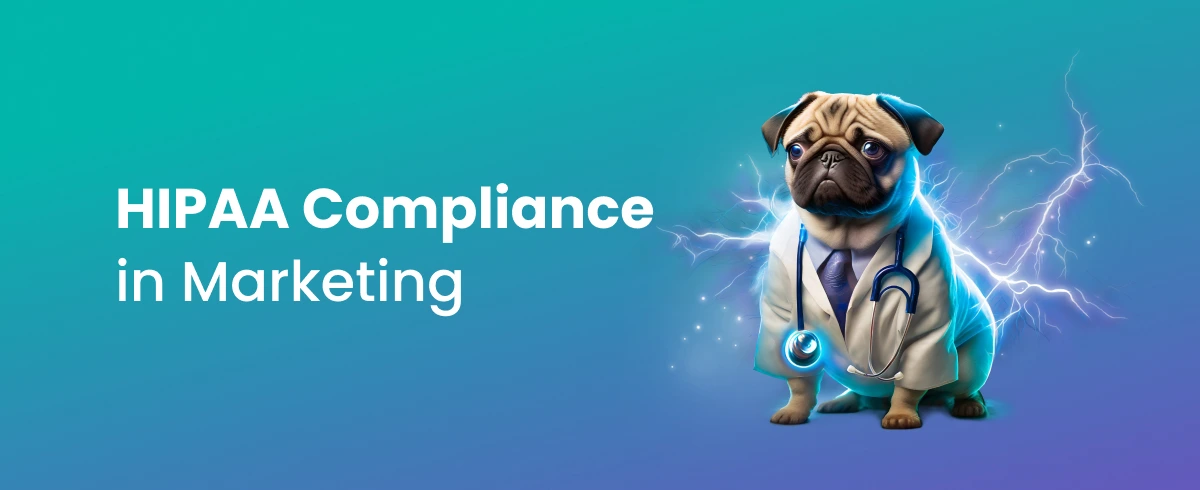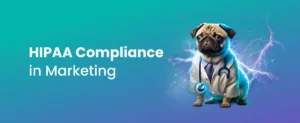A recent medical data breach should serve as an alert for any professionals involved in healthcare marketing or working within a healthcare marketing agency. Data security and HIPAA guidelines are no longer just a legal concern—they are essential for maintaining patient trust and avoiding costly fines. In a widespread contravention, over 86,000 records—including highly sensitive personal and medical information—were left exposed due to poor data compliance and security. This goes beyond a PR disaster for the particular company; rather, it’s a compliance nightmare that could cost millions in fines and loss of trust.
This is why it’s essential for marketers to treat HIPAA compliance as more than an afterthought when it comes to managing their data and marketing efforts. The truth is that marketing in healthcare is not the same as marketing other verticals. Handling protected health information (or PHI) means that every email, ad and campaign can come with legal strings attached.
HIPAA: The Compliance Blind Spot in Marketing
No marketer working in healthcare marketing sets out with the intention of violating HIPAA guidelines. However, non-compliance can sneak in through these two common oversights:
The Assumption That ‘Marketing Data’ Isn’t PHI
Many healthcare companies and healthcare marketing agencies assume HIPAA guidelines only apply to medical records stored by hospitals and insurers.
If your CRM, retargeting campaigns, or email lists contain any health-related identifiers (like appointment reminders, prescription refill prompts, or even a newsletter about a specific condition), that data can fall under HIPAA protection.
The Reliance on Vendors That Don’t Follow the Rules
It’s accepted practice for digital marketers to make use of third-party platforms for lead capture, email marketing, or ad tracking, but if the platform’s compliance isn’t vetted, you’re opening yourself up to data breaches.
How to Get It Right: HIPAA-Compliant Marketing That Works
Being compliant with HIPAA guidelines doesn’t mean you can’t run high-performance healthcare marketing campaigns.. It just means you need better processes and smarter data governance. Here’s what top healthcare brands are doing right:
- Rewriting Consent Language for Clarity
Patients don’t read fine print. If your opt-ins for marketing emails or retargeting campaigns don’t explicitly explain how data will be used, you need to align them to make sure you’ve covered your bases and protected yourself from a HIPAA breach. - Vet Every Marketing Platform for Compliance
If a software provider won’t sign a Business Associate Agreement (BAA), they probably aren’t HIPAA-compliant—a critical concern for any healthcare marketing agency handling patient data. - Building First-Party Data Strategies
With an increase in third-party data privacy crackdowns, first-party data is your friend. Brands that collect and manage their own consented patient data will be miles ahead of those relying on shady tracking methods.
If your marketing team treats HIPAA compliance as a legal box to check, you’ve already lost. Senior marketing leaders need to champion compliance as a core part of the brand’s trust strategy.
Because at the end of the day, a well-protected patient is a loyal customer.
While GDPR and CCPA focus broadly on consumer privacy, HIPAA specifically governs the use and protection of protected health information (PHI) in the U.S. healthcare sector. HIPAA also has stricter requirements around data sharing, consent, and access logs for entities handling PHI.
Yes. Regular HIPAA training for marketing teams is essential—especially for those handling patient data. This helps prevent accidental breaches and ensures everyone understands how to manage PHI responsibly in digital campaigns and communication channels.
Yes, but with extreme caution. You must avoid sharing any identifiable patient information or engaging in discussions that could inadvertently disclose PHI. Even a simple comment or testimonial could lead to a breach if not anonymized or consented to.
Best practice recommends conducting compliance audits annually, or more frequently if there are major system changes or incidents. These audits help identify gaps in data protection, consent workflows, and third-party vendor compliance.



















